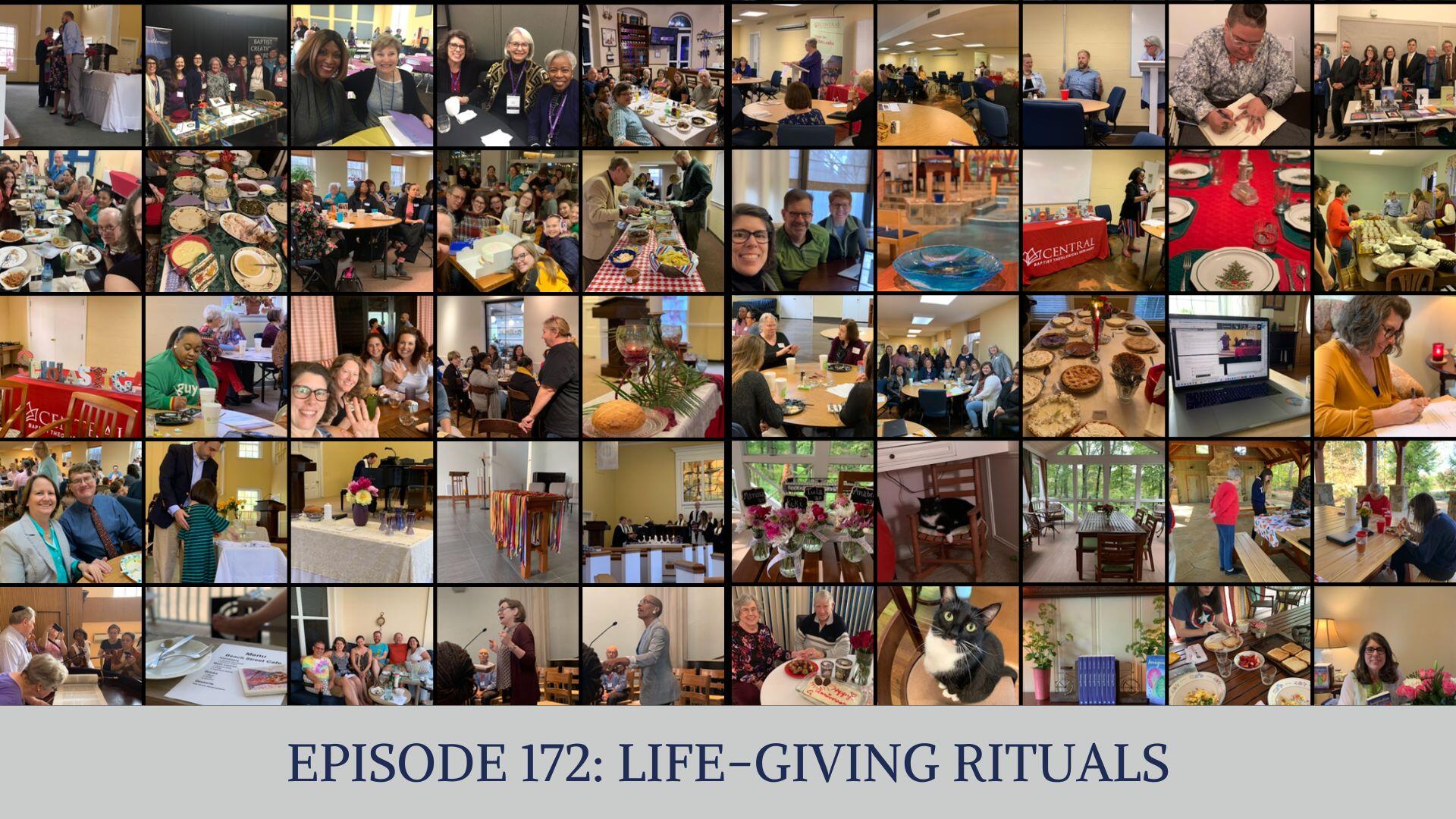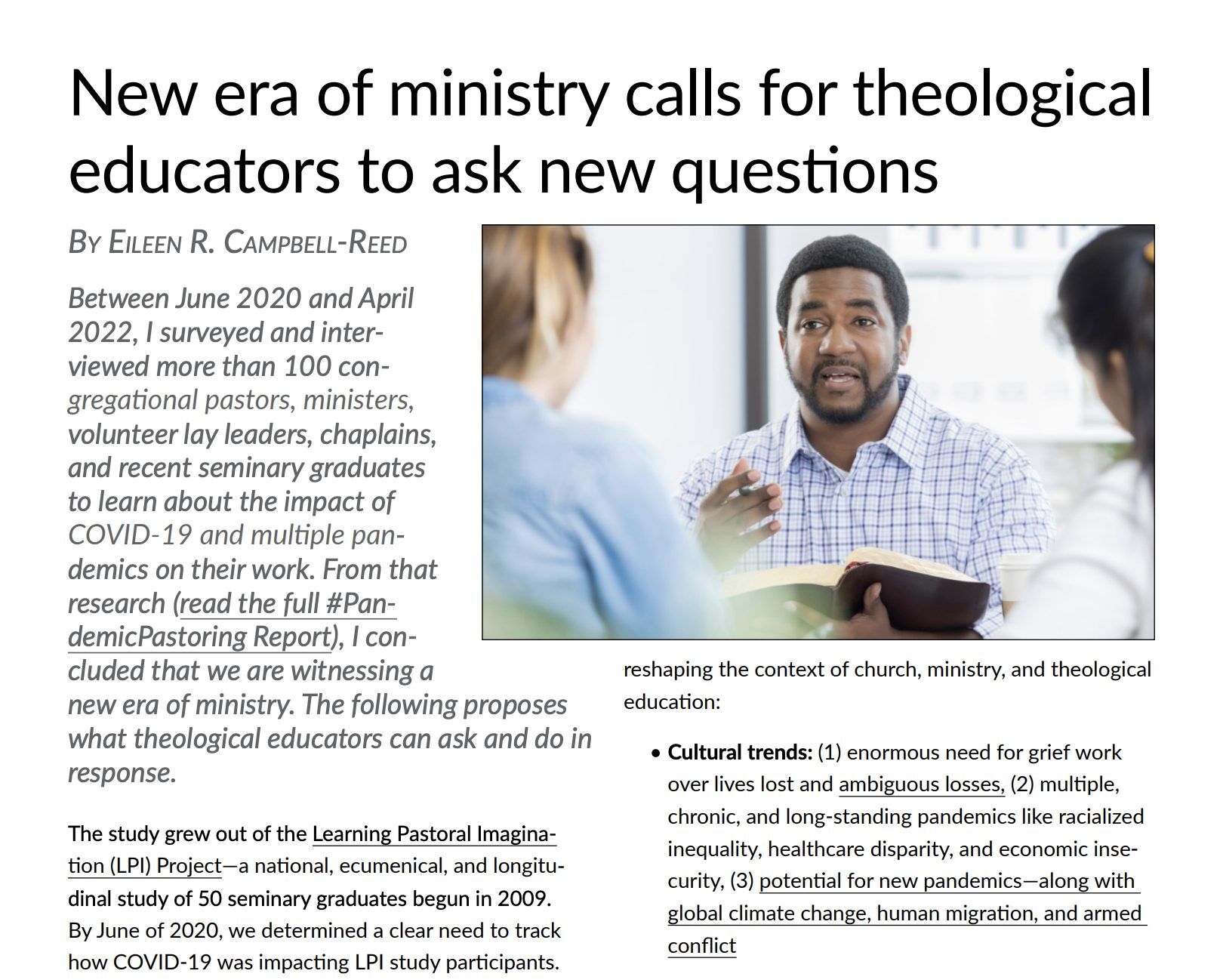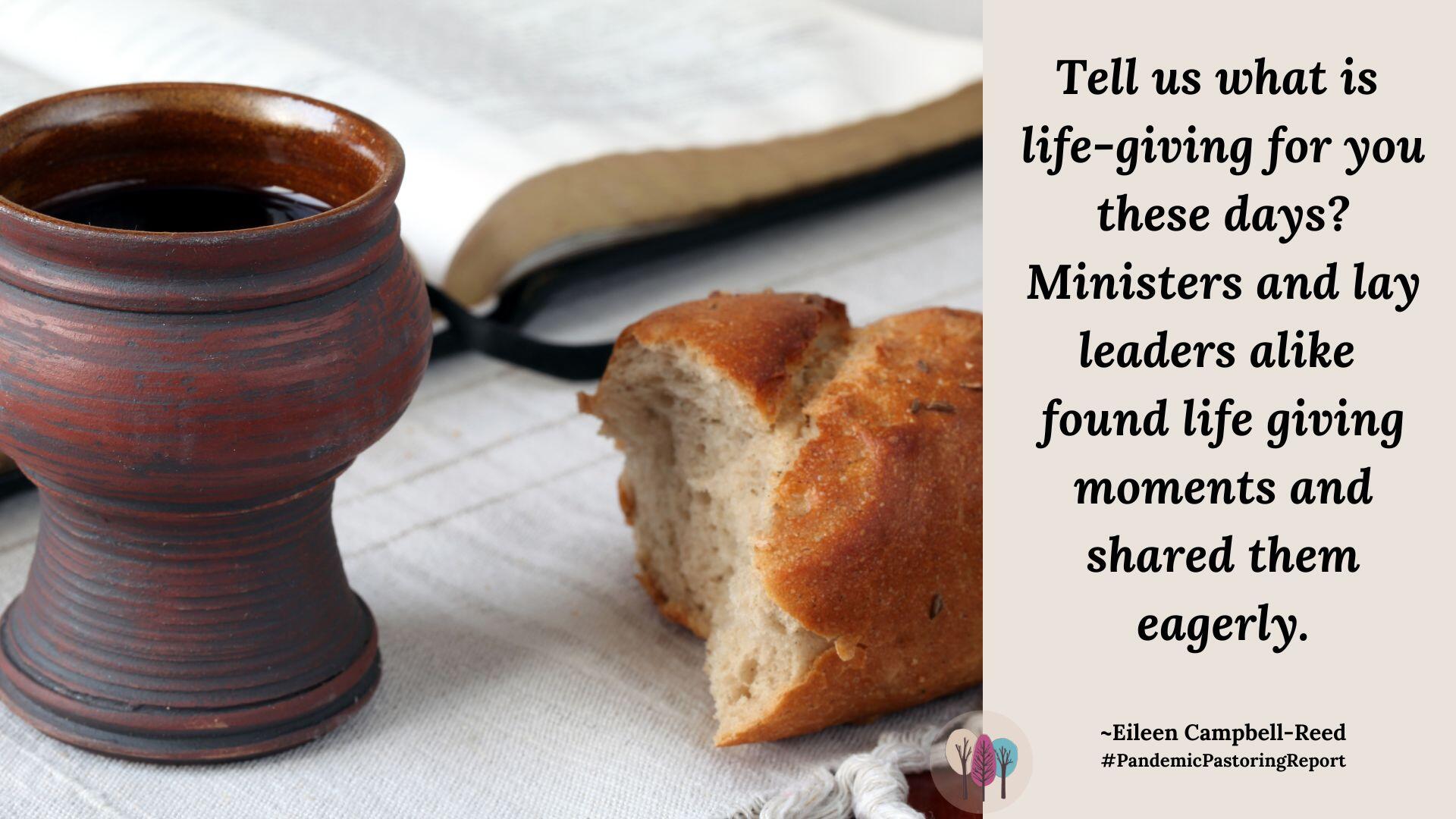For two months I have been saying daily that we need more space for lament and life-giving rituals as we transition into a new era of ministry. Today I offer three idea buckets to support you in our ongoing work to address these needs tangibly and directly: 1) a new article for seminary faculty and staff; 2) an idea for All Saints’ Sunday ritual; 3) a blessing of the hands for chaplains who serve in healthcare settings. I hope each life-giving ritual and question wills inspire you as you create your own rituals and questions.
And on this All Saints’ Day I give thanks for you for being on this journey of learning and growing together. I pray that you will lean into that which is life-giving and take courage for your work today.
A Word for Theological Educators
The #PandemicPastering Report, released in September, offers insights and stories to help us interpret what living through the pandemic means. How did this season change us? What did we lose and gain? Where do we go from here?
I wrote the report for churches and ministers. And I also wrote it for my colleagues in theological education. This week, I wrote directly to seminary faculty and staff about the implications of the research I did for 22 months. And I raised many questions that I hope my colleagues will ask in their schools.
Here is the link to the Association of Theological Schools, Colloquy Online article: “New era of ministry calls for theological educators to ask new questions.” You can also listen to the article here.
A Ritual for All Saints’ Sunday
As I searched for photos of tables, specifically looking for communion tables, I was overwhelmed by the power and beauty and deep symbol of the table. My phone has a feature that allows me to search everyday objects. When I search “table” I am flooded with images of friends and family, students and coworkers, my faith community, local and far-flung. Seeing my daughter and her friends grow up, seeing images of saints no longer with us in body, seeing events that shaped and helped to define me. It was truly beautiful. Life-giving, indeed.
The tables themselves hold food, writing, work, and more symbols of faith and community. Candles, bread, wine, birthday cake, elaborate meals, open spaces, memories, invitations, and hope.
This year as you and your faith community mark All Saints’ Day, I invite you to consider the powerful symbol of the table. How can the tables you share become places of remembrance, witness, lament, and joy? How could you harness and highlight the gift of tables to make space for grief and questions of your shared purpose?
An idea for gathering around the table on All Saints’ Day
- Put a new cloth on your communion table (protecting the table itself with a plastic or vinyl cloth under it). Choose heavy fabric like canvas in a color that is light and can take the writing. Gather fabric markers that will be visible on your cloth.
- Invite your congregation to write their losses on the new communion table cloth. Include the names of saints lost in the pandemics. Make space for naming other more ambiguous losses as well. This step can be taken in worship itself, or beforehand in a more informal or teaching setting.
- In your shared words include the ideas that we hold one another in community, and through our losses and grief; the saints are part of the foundation laid by God in Christ; we are all connected and supported by God through our relationships in this community; our losses become part of our story of being the beloved community; this table holds both memory and hope for our shared story.
- Serve communion from that table with the new cloth. Pray with both lament and thanksgiving for all we have lived through together. Ask God’s guiding love and presence as you re-imagine how to be church, how to become the beloved community.
- Craft this ritual so that it meets your community where they are in this moment. Acknowledge both loss and life-giving moments gathered around the table.
A Ritual for Chaplains
During the past month of Clergy Appreciation, now coming to a close, we give special thanks for chaplains. The work they do has been more publicly appreciated since March of 2020. Yet often their work, like much of ministry, remains hidden. Just as breathing or digestion or other internal systems to keep bodies alive, chaplains often channels life and care to keep people and systems sturdy and sustainable.
Chaplain Kim McKay Allen shares a “Blessing for Hands” to encourage and pray for healthcare workers. As a chaplain in a healthcare setting, you probably care for both patients and families, as well as your partners on staff. The last 30 months has been extremely challenging for healthcare professionals. And the experiences of exhaustion and burnout have been a common feature and more intense than before the Covid-19 pandemic.
See what Chaplain Kim did to support and bless in the life-giving ritual she designed. Then set your own. Offer lament and life to the people in your care. Perhaps hold a ritual for your fellow chaplains as you gather to support one another.
How To Survive Your Internship in a Pandemic by Kim McKay Allen






